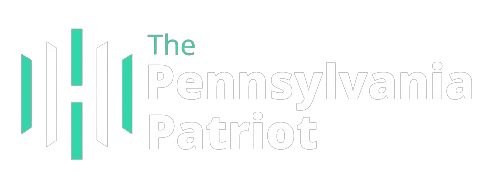By Daniel Newhauser
WASHINGTON — State parties played an unprecedented role in financing this year’s presidential election, enabling national political parties to raise impressive sums from individual donors and keep more money than they otherwise would have been able to.
This is all thanks to a 2014 Supreme Court decision that eliminated the overall limit on the amount of money a person can donate over a two-year period to a combined total of national political parties, federal candidates and state party federal accounts. The limit has been in place since Watergate.
There is nothing illegal about what happened, but an analysis of federal data by States Newsroom shows that almost every Republican and Democratic party in the state helped pump more big money into this year’s election. The system also benefited swing states like Florida, North Carolina and Georgia more than states with less close races like Maryland and Tennessee.
During the 2016 presidential election, Republicans and Democrats tested the novel world of campaign finance created by the Supreme Court’s decision in McCutcheon v. Federal Election Commission.
https://www.penncapital-star.com/blog/pa-certify-election-results-for-biden-harris-cementing-win-in-key-2020-battleground-state/
In 2020, however, they appear to have perfected the program, which critics have called essentially a Supreme Court-sanctioned money laundering operation.
Michael Beckel, research director at the nonpartisan election finance group Issue One, said the flow of money in the wake of the Supreme Court’s decision is a disturbing trend that begs for more stringent enforcement.
He said lawyers who argued for lifting the tough money limit in 2012 told the Supreme Court that such action would strengthen the position of state parties. But what has actually happened is that national parties have centralized control over where that money goes.
“These systems were not designed as a way to launder money through state parties back to the national committee,” Beckel said. “I think there are a lot of questions that can be raised about situations where money appears to flow directly through the national party to the state parties and then back to the national party.”
How it works
Here’s how the money flows: The Republican National Committee and the Trump campaign formed one huge joint fundraising committee with nearly all of the state-level GOP parties as partners. They called it a Trump victory.
Republican parties in all but five states – Connecticut, Delaware, Massachusetts, Utah and South Carolina – participated in the joint fundraising committee with President Donald Trump and the RNC.
That means 46 local Republican organizations participated in the agreement this year, including the DC Republican Party. That’s more than the 22 state parties that participated in Trump’s joint fundraising committee during the 2016 presidential election.
And it wasn’t just Republicans.
Campaign Finance 101: How big money influences our politics and how little money can be the answer
Democrats did the same with the Biden Victory Fund. Only the Democratic parties in California, Iowa, Illinois, and South Dakota did not participate in this joint fundraising arrangement, bringing the number of involved state parties to 47 (including D.C.).
That’s more than the 33 state parties that were part of a similar tool created with Hillary Clinton’s presidential campaign in the 2016 election cycle.
Because all of these committees came together, the joint committee was able to raise the maximum amount that could be donated, not only to a presidential campaign or national political party, but also to each state party.
The legal limit on how much an individual donor could give in total before 2012 was $117,000. But in 2020, that cap on total contributions was lifted, and dozens of megadonors wrote monster checks for well over half a million dollars each to both of these joint committees, not to mention donations to other federal candidates.
For example, Nevada casino magnate Sheldon Adelson and his wife Miriam each donated $580,600 to Trump Victory in February, along with many other high-profile Republicans.
Meanwhile, the Biden Victory Fund each raised $620,600 from tech entrepreneur Jeff Lawson and his wife Erica, as well as a group of other influential left-leaning donors.
“It’s Just a Laundromat”
The real problem, campaign finance watchdogs say, is what happened to the money later.
While there are limits on the amount an individual can donate to a national party and a state party, there are no limits on the amount states parties can donate to their partner national parties.
For example, in the event of Trump’s victory, the joint commission gave millions of dollars to state Republican parties. In turn, these state parties transferred money to the RNC, often on the same day.
That means the RNC and Trump’s presidential campaign were essentially using state parties to launder money in order to obtain more money than individual donation limits would typically allow, according to Brett Kappel, an election finance expert at the law firm Harmon Curran.
“The Supreme Court said it was legal, so, you know, they’re not even trying to hide it,” Kappel said. “It’s just a laundromat. “Money flows in and out on the same day.”
This is not an exaggeration.
For example, the Florida Republican Party took home $920,090.63 in Trump Victory on September 4.
On the same day, the Florida side donated that exact amount to the RNC.
The situation repeated itself in October. On October 7, Trump Victory sent $1,351,910.61 to Florida Republicans.
Two days later, the GOP gave the same amount to the RNC.
On September 4, the Arizona Republican Party claimed Trump Victory for $643,902.30. Colorado Republicans received $534,673.69. For Georgia it was 649,631.92. The Michigan GOP received 701,697.18. Minnesota Republicans won 651,468.65.
All amounts were transferred directly to the RNC.
This does not mean that state parties did not benefit at all. To some, national parties have donated millions of dollars. But they didn’t get the same benefits.
Florida, North Carolina, Georgia and other political swing states or states where Senate races were highly successful made significantly more – Florida Republicans, for example, took in $19.2 million from the RNC.
On the other hand, smaller and less politically critical countries? Not so much. For example, the Maryland Republican Party raised just $122,500 from the RNC. The Tennessee Republican Party got just $21,000.
An RNC spokesman declined to comment, and a DNC spokesman did not respond to a request for comment.
Daniel Newhauser is a national correspondent for States Newsroom who contributes to the Capital-Star.

